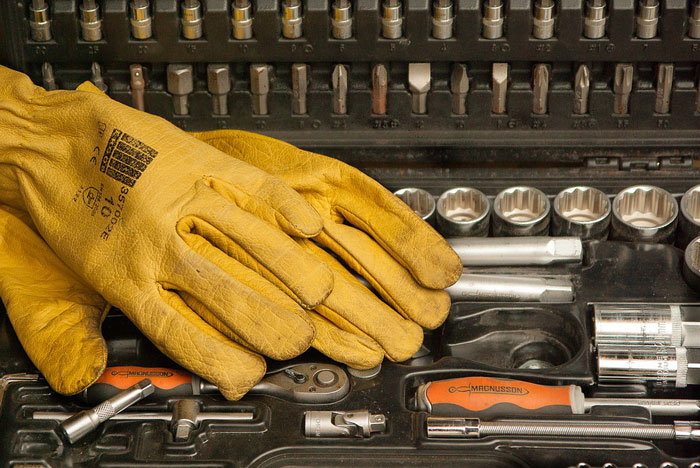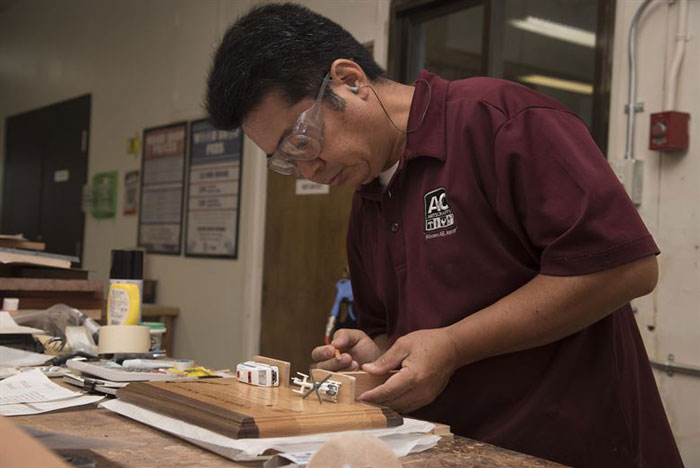Woodworking is great until you get injured. Yes, it’s an enjoyable task for many, but woodworkers know it very well that you can easily get injured.
While splinters are commonplace, there is also the possibility of more serious injuries. However, you should not be discouraged from woodwork because of the risks involved, as they can be minimized.
This article will give precautions and advice on how to safely go about working with wood.
By following these tips, you can prevent injuries easily.
Let’s begin!
Safety Gears You Need to Avoid Injuries
Before you go on to working with your tools, there is some safety equipment you should always have in hand. If you can’t afford or find all of them, there are still a few that are must-haves. Some safety equipment you should have in stock are:
Gloves
These are probably the most important. You will be working with your hands for the majority of your projects, so it makes sense to have gear that will ensure your hands are protected.

There are gloves made just for woodworking that will suffice. Also, there are anti-vibration gloves that allow you to work more smoothly with power tools and for longer times. Additionally, there are cut-resistant gloves that protect you from cuts when carving. They’re quite durable and provide a great degree of flexibility.
Safety Glasses
This is another must-have. One should have a safety glass with resistant lens and side screens. You’ll no doubt be shaving off lots of wood and have dust flying around everywhere.



Eyes are very sensitive, and one stray shaving can cause massive irritation. Always keep them on when working. You can also get a face shield for more protection.
Ear Protection
While not as essential as the other two, ear protection is more important in the long run, where constant loud noises from power tools will slowly deteriorate your hearing or cause Tinnitus.
Masks
Like gloves and safety glasses, masks are very important. Shaving and smoothing wood will often produce lots of dust and debris. These are very harmful to your body, and masks are needed to prevent you from breathing them in. You can go another step further and get a respirator.
Apron

While not the most essential, an apron helps protect your clothes from dust and prevents them from getting stuck when working. You can wear appropriate clothing (mostly avoid baggy and loose clothes) to make sure you aren’t hindered, but an apron provides a more comfortable and easier solution.
Band-Aids and Finger Guards
Even with all the protection, there are still the chances of small cuts and scrapes. Having a supply of Band-Aids is nice to cover up any cuts. Finger guards are best used to protect your fingers during wood carving.
Woodworking Safety Tips to Avoid Injuries

Once you have put on your gloves, safety glasses, and other safety gear, you can get to work. There are some guidelines and tips you should always keep in mind when working with wood. Keep these tips in mind:
1. Do Not Use Tools You Do Not Have Prior Experiences with
As a general rule of thumb, do not use any power tool that you have no idea or expertise in working. You increase the dangers exponentially by doing that. Either look for an alternative tool or have someone who is an expert in that tool to help you.
2. Avoid Being Careless or Distracted When Working
Make sure your working place is free from distractions. Carelessness is an easy way to injure yourself. Always pay attention when working. If you need to talk to someone or answer a call, turn off the power to your tools and then do it.
Do not multitask. Also, never leave machines on and unattended when you leave to do something.
3. Clear the Wood of Any Metal before Working on It
Check the wood you’re working with. Dislodge any nails or screws if there are any. When you get to cutting the wood, any metal lodged into it will interfere heavily and might injure you.
4. Keep the Wood Tight and Secure
Make sure the wood plank you’re working on is secured and clamped properly. Check it a few times before you start your task.
5. Keep Your Workplace Sufficiently Lit
Your workplace should have sufficient lighting. Working in poorly lit conditions will increase the chances of accidents, especially when cutting or using power tools. Your workplace should also be kept dry and clean.
6. Avoid Excessive Wiring
When you’re using power tools, minimize the amount of wiring. This makes the workplace less cluttered and saves you from tripping and injuring yourself.
7. Never Change Blades without Disconnecting the Machine First
When changing blades and bits from power tools, always disconnect the machine and then change it. Turning it off isn’t recommended because there might be residual voltages which pose a risk.
8. Always Clean and Remove Dust after Finishing Work
Do not remove waste or shavings while working. It is very dangerous to do so. Either complete the task at hand and then proceed to do a proper cleanup or turn off and disconnect the machine before removing waste. Use push sticks to remove dust instead of your hands.
Conclusion
Woodworking is fun, but injuring yourself is not. Keep these tips in mind, and you’ll avoid the many dangers and pitfalls of this craft. Be careful and best of luck in your future projects.
Few Related Discussions:
- Essential tools you should have for woodworking
- Beginner Tips for Woodworking

